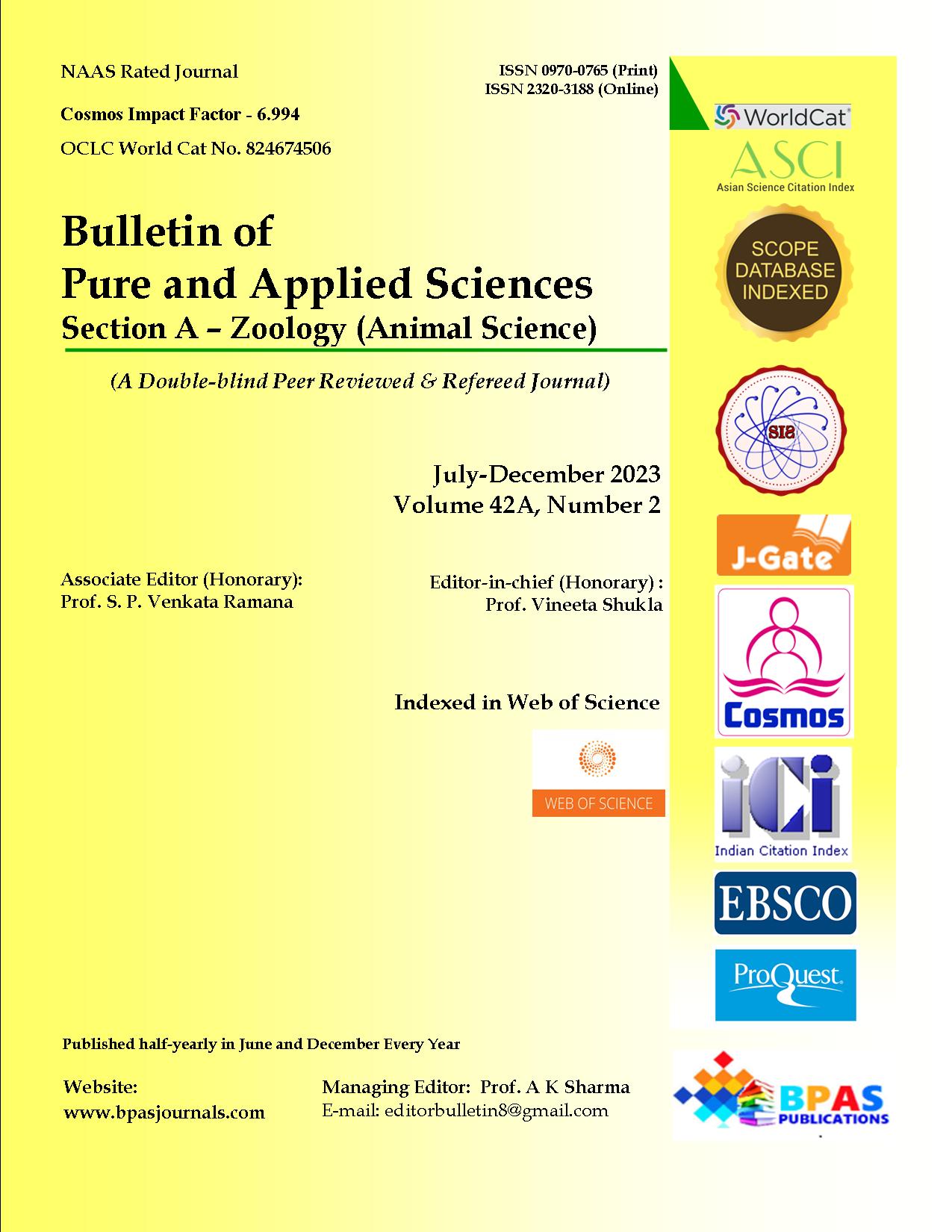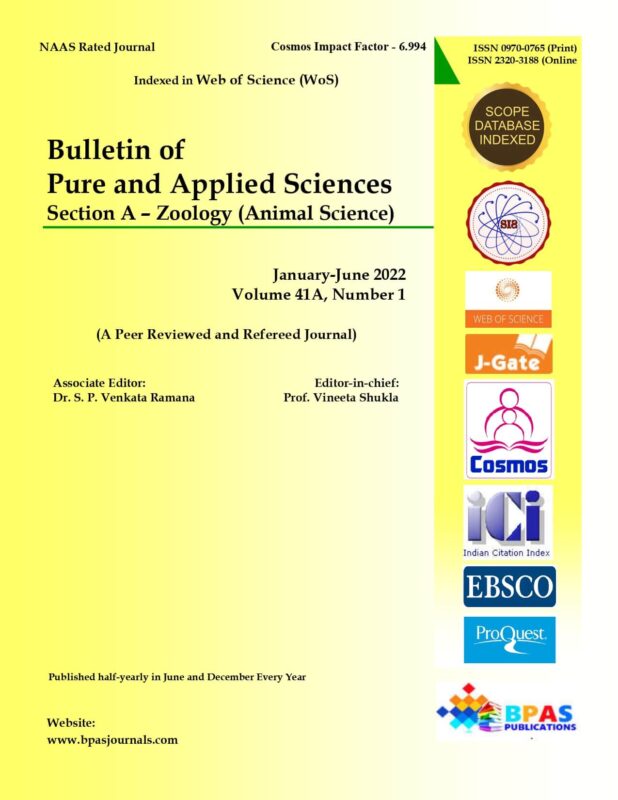Effect of Hibiscus rosa-sinensis and Camel Milk on the Reproduction of Diabetic Male Albino Rats – A Review
9.38$
1K. Chauhan, 2P. Shuklan, 3A. Raj, 4S. Ahlawat, and 5S. Rani*
Bulletin of Pure and Applied Sciences
Zoology (Animal Science), Vol.42A, No.2,
July-December 2023: P.305-316
Categories: 42A(2), JUL-DEC 2023, BPAS-Zoology
Description
Description
1K. Chauhan, 2P. Shuklan, 3A. Raj, 4S. Ahlawat, and 5S. Rani*
| Author’s Affiliation:
1,2,3,4Research Scholar, Department of Zoology, M.D. University, Rohtak, Haryana, India, 124001
|
| *Corresponding author:
Dr. Sudesh Rani, Associate Professor, Department of Zoology, M.D. University, Rohtak-124001, Haryana, India. E-mail: sudeshrani.zoo@mdurohtak.ac.in, khushboo.rs.zoo@mdurohtak.ac.in
|
| Article Info:
Received on 25.04.2023 Revised on 12.10.2023 Approved on 07.11.2023 Accepted on 16.11.2023 Published on 20.12.2023 |
Abstract
Diabetes mellitus is a long-term medical condition identified by high blood sugar levels. Two forms of diabetes most commonly occur. Type I diabetes occurs in children and type II diabetes is normally found in adults. Although diabetes affects the whole body's function surprisingly, it gives rise to male infertility. Diabetes causes impotency, and ejaculatory disorders and decreases libido in males. Hibiscus rosa-sinensis and camel milk both are known for their anti-diabetic properties. Both are able to deal with the oxidative stress caused by diabetes because of their antioxidant properties. Both have other properties like antibacterial, anti-inflammatory, antifungal, antimicrobial, antitumor, cardio-protective, hepato-protective etc. The crude extract of Hibiscus rosa-sinensis has insulin-secreting activity, significantly lowering the glucose level of blood in diabetic rats. Camel milk contains insulin-like protein which is also reported to positively decrease the blood sugar level.
Keywords:
Diabetes mellitus, Blood glucose, Reproduction, Hibiscus rosa-sinensis, Camel milk.


